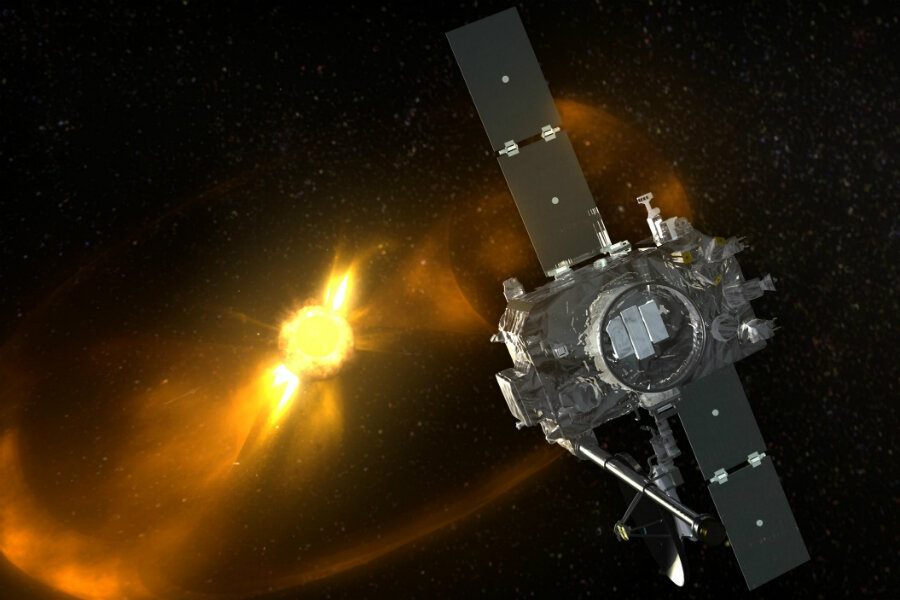NASA's decade of sungazing: What have we learned and why does it matter?
After a decade of research, STEREO-A and STEREO-B are finally coming home.
On October 25, 2006, NASA began its Solar Terrestrial Relations Observatory (STEREO) mission. The objective was simple: Obtain stereoscopic images of the sun via two orbiting probes. Having completed their mission, the two crafts are now journeying back to Earth.
It may not sound like much, but it’s important work – puns aside, the sun is central to our existence. Without it, our planet would surely be dark and barren: solar activity may have even powered abiogenesis, the process by which life arose from nonliving chemical matter. Over the course of 10 years, NASA’s STEREO mission gave us an unprecedented 3D view of our shining star. But astronomers say there’s still much to learn.
The sun takes about 25 days to spin on its axis. In other words, it takes about a month for ground-based researchers to fully observe its surface. That’s a major problem for astronomers and space weather researchers, because solar storms and sunspots can materialize and dissipate in the span of just a few days.
“You can assume how the sun behaves in 3D,” Werner Däppen, a heliophysicist at the University of Southern California, tells The Christian Science Monitor in an email. “But it is [still] an assumption, since you never see more than half of it. STEREO changed this forever.”
In order to capture real-time images of the entire sun, NASA needed two separate vantage points. By positioning one STEREO probe just inside Earth’s orbit and the other just outside, NASA could observe the sun from three perspectives at once.
In 2007, the mission produced the first ever stereoscopic image of our central star. Four years later, when STEREO-A and STEREO-B were exactly 180 degrees apart, NASA researchers could finally see the whole sun in real time. This unprecedented view gave researchers the data necessary to model certain types of coronal mass ejections.
“The sun … directly affects us in ways the planets don’t, so there’s a much more practical aspect of needing to know more about it,” W. Jeffrey Hughes, a professor of astronomy at Boston University, tells the Monitor in a phone interview. “There’s a whole discipline now called space weather. Magnetic storms can disrupt communications. Magnetic disturbances can affect power grids.”
Solar data may also provide some much-needed context to climate studies, experts say.
“One of the most pressing scientific questions today is climate change,” Dr. Däppen says. “By better understanding the sun and its mechanism, we can extrapolate long-term to past and future behavior. Only by assessing the sun's role correctly will we know how much warming is anthropogenic.”
In the days of antiquity, the sun was deeply tied to religion. The Incas, Aztecs, and ancient Egyptians – all critically aware of the sun’s life-giving power – considered it a deity. From Malta to Newgrange, prehistoric people built stone megaliths to track its movement and signal the solstices.
According to some ancient biographers, the Greek philosopher Anaxagoras was imprisoned for his “heretic” theories about the sun. He proposed that the chariot of Helios, per ancient Greek spiritual belief, was actually a giant flaming mass. Anaxagoras was sentenced to death for this assertion, though he was eventually spared. A few centuries later, Chinese astronomers under the Han Dynasty began keeping meticulous observations of sunspots.
Heliocentrism – the notion that Earth revolves around the sun, not the other way around – was first proposed around the same time. But the theory didn’t pick up traction until the 16th century, when Nicolaus Copernicus explained the theory mathematically. In the coming centuries, luminaries such as Isaac Newton, William Herschel, and Lord Kelvin would reach landmark conclusions about solar radiation and the thermal mechanics of the sun.
In the late 1950s, NASA took a particular interest in our central star. The agency’s solar satellites, Pioneers 5 through 9, provided the first comprehensive measurements of solar wind and the sun’s magnetic field. Even then, the sun’s ability to interrupt communications systems and disrupt electronics wasn’t fully understood:
On May 23, 1967, the US Air Force was preparing its nuclear-armed aircraft for takeoff. The Soviet Union had jammed US surveillance radars, military officials believed, which was considered an act of war. [But] scientists arrived just in time to defuse the situation: it was actually a solar storm, not a Soviet military operation, that jammed the radars.
In 2018, NASA plans to launch a new solar probe. But this one won’t just stare into the sun – it will attempt to “touch” it. Solar Probe Plus will come within 4 million miles of the sun’s atmosphere, where no spacecraft has gone before, in an effort to better predict coronal activity.
“It’s the nature of science that when you find something out, it always raises more questions,” Dr. Hughes says. “One of the big questions in solar physics now is, can we actually say when a solar flare is going to go off?”
“In a society that is reliant on technology, as we are, being able to predict large solar storms is really important,” adds Georgia de Nolfo, deputy project scientist for the STEREO mission, in an email to the Monitor. “That is why missions like STEREO are so important for us. Space weather is the only area of space science to have a national action plan and, quite recently, national security directive from the President.”






